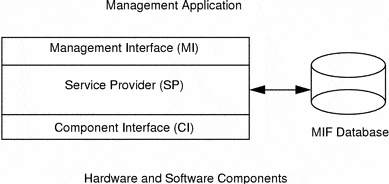Management Information Format, or MIF Format, is a standard format for describing hardware and software desktop computer components that you use in conjunction with Desktop Management Interface (DMI) to manage networked PCs. This article delves into the essence of MIF, its operational mechanics, and its enduring relevance in contemporary technology landscapes.
Index:
- What is Management Information Format (MIF)?
- How It Works
- The Evolution and Current State of MIF
- MIF in Modern Device Management
- Conclusion: The Enduring Legacy of MIF
- References

1. What is Management Information Format (MIF)?
The Management Information Format, or MIF, is a specification used in computer management systems to describe the attributes and characteristics of managed devices. It acts as a blueprint, providing detailed information about hardware and software components. This format enables management systems to recognize and interact with a wide variety of devices, ensuring seamless integration and control.
MIF’s Structure and Functionality
A MIF file contains structured data that describes a device’s properties, such as manufacturer details, model numbers, and configuration information. This structured approach allows for uniformity and consistency in how devices are managed across different platforms. Importantly, MIF plays a vital role in simplifying device management tasks like inventory tracking, status monitoring, and problem diagnosis.
The Management Information Format (MIF) and DMI were defined by the Distributed Management Task Force (DMTF), an organization composed of industry leaders whose aim is to lead the development, adoption, and unification of standards for managing systems.
2. How It Works
The MIF database on a system contains a collection of MIF files that provide information about the various hardware and software components stored on the system. A program called a DMI Service Provider that runs locally and is resident on the computer being managed collects and manages the information from MIF files.
MIF files are text files that are supplied with each manageable hardware or software component installed on the system and that contain information about the attributes of that component. You can retrieve and display the information in the MIF database using a management interface (MI) utility.
Note
Microsoft Systems Management Server (SMS) uses six types of MIF files for collecting and storing information in the SMS database:
- Personal Computer (.mif)
- SMSEvent (.emf)
- UserGroup (.umf)
- JobDetails (.jmf)
- PackageLocation (.pmf)
- Custom architecture (.mif)
SMS can also use MIF files to add information to the SMS database about objects such as routers with custom architectures.
3. The Evolution and Current State of MIF
While MIF was more prominent in earlier computing environments, its principles and applications continue to hold significance. Originally developed in the 1990s, MIF was integral to systems management standards like Desktop Management Interface (DMI). Over time, as technologies evolved, the use of MIF has seen a transition.
Is MIF Still Relevant?
In today’s technology landscape, the core concept of MIF – providing a standardized way to describe device characteristics – remains relevant. Modern incarnations of device management, particularly in areas like Internet of Things (IoT) and network management, echo the foundational ideas of MIF. Thus, understanding MIF is not just about historical knowledge but also about grasping the basics of device management in current contexts.
4. MIF in Modern Device Management
The legacy of MIF extends into contemporary device management scenarios. Its influence is seen in the way modern management protocols and interfaces are designed. For instance, in IoT ecosystems, the need for standard descriptions of device characteristics is more crucial than ever.
MIF’s Role in IoT and Beyond
In IoT, devices from different manufacturers need to communicate effectively. Here, the principles of MIF come into play, ensuring standardized descriptions and smooth interoperability. Additionally, in network management and cloud computing, similar concepts to MIF are used for managing diverse resources.
5. Conclusion: The Enduring Legacy of MIF
In conclusion, though the specific use of MIF files might have decreased, the concept underpinning MIF continues to be a cornerstone in device management. Understanding MIF offers valuable insights into the standardization and simplification of device management processes. As technology marches forward, the principles of MIF will continue to inform and guide the development of new management standards and protocols, echoing its enduring legacy.